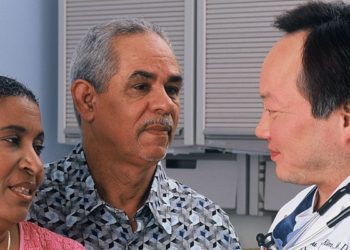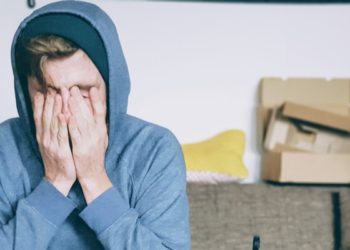Social robots increase joy, decrease sadness in hospitalized pediatric patients
1. In this randomized control trial, researchers discovered that social robots were associated with improved affect in pediatric hospitalized patients as compared to plush toys.
2. The social robot intervention was associated with increased level of joyfulness and decreased levels of sadness as compared to a tablet-based avatar of a bear or a plush teddy bear.
Evidence Rating Level: 1 (Excellent)
Study Rundown: Though the use of robotics is expanding throughout medicine, the feasibility of social robots in inpatient pediatric settings for affect regulation has yet to be explored. In this study, researchers analyzed the feasibility, acceptability, and efficacy of social robots in inpatient pediatric settings to improve patient affect. Researchers compared the social robot intervention to both a tablet-based avatar of a bear and a plush teddy bear. Though researchers found some limitations to the intervention, largely related to implementation of the technology, there was overall acceptability given the high participation rate and reported desire to interact with the social robots again. There was a statistically significant difference in affect between children assigned to the social robot intervention and those assigned to the plush toy intervention: those interacting with the social robot reported a significantly more positive affect. Social robots were also associated with increased level of joyfulness and decreased levels of sadness as compared to a tablet-based avatar of a bear or a plush teddy bear. Though the study is limited by its small sample size and the intervention itself limited by feasibility, particularly in low resource settings, it does offer a novel intervention which demonstrated unique efficacy for supporting hospitalized pediatric patients through emotionally challenging circumstances.
Click here to read the original article, published today in Pediatrics
Relevant Reading: Can social robots help children in healthcare contexts? A scoping review
In-Depth [randomized controlled trial]: In this study, 68 pediatric inpatients between ages 3 and 10 years, hospitalized for both medical and surgical reasons, were initially deemed eligible to participate; 54 patient ultimately consented and participated. Patients were divided into 3 study categories, including a tele-operated Huggable robot (N = 18), a tablet version of the same robot which was able to interact but lacked a physical presence (avatar, N = 17), and a plush teddy bear without interactive capabilities (N = 19). The authors note specific qualitative challenges with feasibility, such as video recording issues and child or parent participation refusal. They also noted a much longer intervention time with the social robot and avatar (robot: mean = 26.4 minutes, SD = 17.0; avatar: mean = 21.7, SD = 11.4) in comparison to the plush toy (mean = 7.8, SD 5.1). The robot and the avatar were of similar acceptability to patients, with 93% of patient stating the robot was “fun” and 92% requesting to play with the robot again (avatar: “fun” = 94%, play again = 92%; plush: “fun” = 75%, play again = 63%). The robot was associated with a significant increase in participants’ reported positive affect as compared to the plush toy (robot PANAS-C-positive mean = 4.56, plush mean 3.39, p < .05). Additionally, joyful expressions demonstrated a statistically significant increase across the 3 interventions (robot > avatar > plush; p = .003), as did agreeable expressions (robot > avatar > plush; p= .001). Expressions of sadness showed a statistically significant decrease across the three interventions (robot < avatar < plush; p = .026).
Image: PD
©2019 2 Minute Medicine, Inc. All rights reserved. No works may be reproduced without expressed written consent from 2 Minute Medicine, Inc. Inquire about licensing here. No article should be construed as medical advice and is not intended as such by the authors or by 2 Minute Medicine, Inc.







